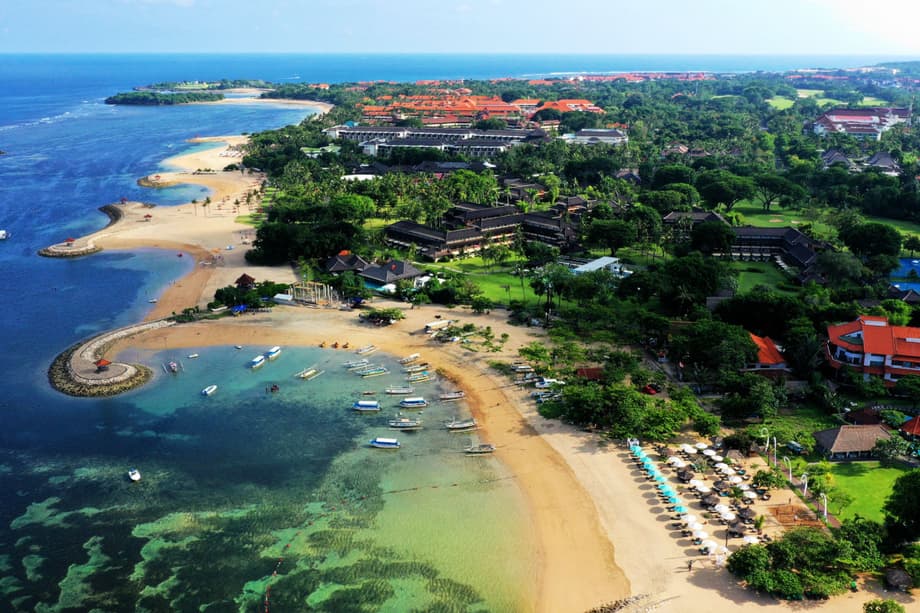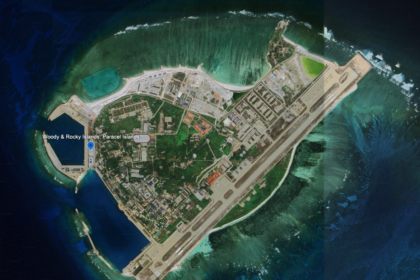Public beaches and resort leases in Bali explained
Bali officials in Badung Regency have addressed public concern after questions were raised about a resort asserting private access to the sand in Tanjung Benoa. They reiterated a basic rule in Indonesia. The coastline is public, and people can walk, sit, and swim along the shore. Hotels, resorts, and beach clubs can operate on parts of the beach only through limited leases managed by local government. Those agreements allow amenities for guests yet cannot restrict the public from using the beach itself.
- Public beaches and resort leases in Bali explained
- The Sakala Resort case at Tanjung Benoa
- What Indonesian law and Bali setback rules require
- Crackdowns and controversies around the island
- How responsible beach operations look
- Managing busy beaches, vendors, and safety
- What visitors should do if access feels blocked
- Environment and climate risk are central to beach rules
- What comes next for Bali beach governance
- Key Points
In this case, The Sakala Resort Bali holds a lease granted by the Regional Asset Management agency. The contract covers 2,600 square meters of Tanjung Benoa Beach for five years, valued at 1.3 billion rupiah. All payments are made electronically into the regional treasury to strengthen transparency. The lease does not allow permanent buildings on the sand. The resort may set out daybeds and umbrella chairs for guests and has planted coconut trees to support the local environment. Public access must remain open and unblocked across the leased area.
For travelers, the practical takeaway is simple. Any claim that a Bali beach is private is not consistent with the law. A resort can set up furniture for its guests, but people still have the right to pass along the shore and enjoy the beach.
How leases work
Beach leases are a form of state asset use. The local government issues measured, time limited permissions to operate on public land, with obligations to keep the area clean and safe. Operators must respect cultural practices, maintain pathways, and avoid altering natural features. Payments flow through official digital channels. Authorities say leases are reviewed and evaluated to keep the balance between tourism, community needs, and the environment.
What resorts cannot do
- Close or fence public access paths on the beach
- Build permanent bars, decks, or walls on the sand
- Set gates or security checkpoints on the shoreline
- Damage dunes or vegetation and discharge waste
- Block emergency corridors or space required for ceremonies
The Sakala Resort case at Tanjung Benoa
The Sakala Resort Bali came under scrutiny after locals and visitors questioned whether it had taken control of part of Tanjung Benoa Beach for private use. Officials say the resort does have permission to use a defined section of the public beach for guest amenities. They clarified that the lease forbids permanent buildings and does not allow closing or limiting public access. The arrangement also includes a duty to help maintain the natural beauty of the beachfront, including tree planting and routine cleaning.
Authorities emphasized accountability. Lease revenue goes to the regional treasury electronically, and the use of public assets is audited. The goal, officials say, is to avoid conflict with community interests while still supporting quality visitor services in a popular zone for water sports and family stays.
What Indonesian law and Bali setback rules require
Indonesian law treats the coastal area as public space. The shore is a shared resource. Local governments can grant measured use of beach areas to tourism businesses, but those rights do not turn a public beach into private property. People retain the right to access the coastline.
In Bali, setback rules restrict building near the high water mark. Permanent structures are barred within a defined distance of the shoreline in many areas, often 100 meters from the high water line. Local agencies investigate and act when businesses build inside this no build zone or take over public right of way.
These rules serve several goals. They protect coastal ecosystems like dunes and vegetation. They reduce disaster risk during storms and tides. They keep space open for Balinese Hindu rituals, such as Melasti, that require access to the sea. They also ensure that all residents and visitors can use the beach safely.
The Head of the Bali Provincial Tourism Office, Tjok Bagus Pemayun, has summed up the principle that guides enforcement.
“Beaches belong to the Balinese people and are public property. Although businesses may have permits to operate, they cannot claim exclusive use or prevent public access.”
Crackdowns and controversies around the island
Local enforcement has intensified. The Badung Public Works and Public Housing Agency has identified at least 21 businesses along Balangan Beach that were built on public land or right of way. Investigations have also flagged setback violations at Melasti Beach, Ungasan Beach, and South Kuta Beach. Officials have issued repeated warnings, part of a staged process before demolition orders. Several prominent beach clubs have been cited, while some operators say they have leases or agreements with local authorities or traditional villages. Officials stress that formal permits and proper siting are required when running commercial activities on public land.
In the most dramatic case, more than 40 businesses at Bingin Beach are being demolished after authorities determined that many structures violated spatial planning rules and encroached on state land. The work has disrupted travel plans and raised concerns about how people will reach the beach, which is accessible only via steep stairways through cliffside buildings. Business owners have engaged lawyers and say they tried to negotiate changes. Officials counter that notices were posted and that the process followed the law.
High profile voices in the surfing world have joined the debate. Eleven time world champion Kelly Slater voiced concern on Instagram about the loss of long standing local businesses and the cultural impact of new development.
“Awful to hear and see that the beachfront at Bingin in Bali has been bought up and all the local eateries and other businesses will be demolished to make room for some kind of beach club and not sure what else?”
How responsible beach operations look
Most beachfront resorts in Bali place loungers and umbrellas on the sand yet keep the shoreline open to the public. Staff are trained to assist guests without stopping passersby. Public access corridors are kept clear near the wet sand line so people can walk the length of the beach. Equipment is portable and stowed during storms or ceremonies. In Nusa Dua, a continuous beach path runs for several kilometers, linking multiple resorts and public entries. In Kuta, some hotels sit across a one way road from the sand, which remains a public beach where everyone is free to come and go.
The principle is simple. Amenities for paying guests are fine if they are temporary and do not obstruct others. Exclusive control is not fine. Resorts and beach clubs that respect this rule help avoid conflict and protect the shared character of Bali’s coast.
Amenities versus exclusive control
Offering shade, seats, towels, and service is part of a resort’s value. Claiming a stretch of the beach as private is not. The difference shows in signage, layout, and staff training. Clear public paths, portable furniture, and a welcome to walkers are signs of good practice.
Good practice checklist for operators
- Keep public corridors to the water clear at all times
- Use only portable furniture on the sand
- Post signs that indicate public access points
- Protect vegetation and avoid reshaping dunes
- Train staff to assist guests without challenging public passage
- Coordinate with lifeguards and village security on safety zones
Managing busy beaches, vendors, and safety
Rules are evolving to keep beaches safe and enjoyable as visitor numbers grow. At Kuta Beach, photographers who work commercially must now register with the management agency and follow specific protocols. Unregistered work can trigger sanctions. The new system aims to reduce crowding around surf breaks and sunset spots, improve safety, and cut litter, while preserving opportunities for local livelihoods. Visitors who feel disturbed by aggressive selling or unsafe behavior can report issues to the local pecalang (village security) or the beach management office.
Similar debates play out in other beach nations. In Australia, lifeguards and tourism advocates have raised concerns that large numbers of personal cabanas can clog high traffic areas and impede rescue teams. The shared lesson is to keep access paths open, place gear with care, and balance comfort with safety.
What visitors should do if access feels blocked
Stay calm and polite. Ask staff to point out the public access path to the sand. If someone insists that a Bali beach is private, you can continue along the shore. If you are stopped from passing, make a note of the location, time, and what was said, then report it to pecalang or the beach management office. In an emergency or criminal case, contact police or the local tourist police unit.
During religious ceremonies, temporary restrictions may apply. Respect signs and instructions for events such as Melasti. For resort guests, enjoy the amenities, but avoid placing personal gear across public corridors and always pack out your trash.
Environment and climate risk are central to beach rules
Recent floods and landslides on Bali exposed how overdevelopment and strained waste systems can make storms more destructive. Paved surfaces and dense construction reduce natural drainage. Debris clogs canals and culverts. Authorities say they are reviewing buildings along rivers, cracking down on illegal hillside construction, and strengthening zoning enforcement. Beach setback rules and the protection of open sand are part of the safety net. Keeping the coast natural helps absorb wave energy and storm surge and preserves space for drainage and emergency access.
Officials are also pushing improvements in waste collection and disposal. Researchers warn that heavier rains are more likely in a warming climate. Cleaner waterways, stronger spatial planning, and clear public access are not just about comfort. They support community safety and the resilience of coastal tourism.
What comes next for Bali beach governance
Badung Regency leaders say beach asset use will be evaluated on a routine basis. Digital payments to the regional treasury are designed to improve oversight. Operators that comply can keep offering services to guests. Those that build inside the no build zone or block public rights of way face penalties, including demolition orders after warnings. Clearer signs, better marked public access points, and closer coordination between resorts, village authorities, and lifeguards can reduce friction on busy days.
A new provincial policy framework aims to stop beach privatization and hold businesses accountable if they obstruct the public. Visitors can expect that Bali’s famous beaches will remain open. Amenities will continue within set rules, and authorities will keep acting against structures that ignore setbacks or restrict access.
Key Points
- All beaches in Indonesia are public. Resorts can lease space for amenities but cannot block access.
- The Sakala Resort Bali holds a five year lease over 2,600 square meters in Tanjung Benoa worth IDR 1.3 billion. The lease bans permanent buildings and requires open access.
- Lease payments go electronically to the regional treasury to improve transparency and audits.
- Bali setback rules keep permanent construction well back from the high water line in many areas to protect nature and safety.
- Badung agencies have warned and, in some cases, demolished businesses that violate setbacks or take over public right of way at Balangan, Melasti, and other beaches.
- At Bingin Beach, more than 40 businesses are being demolished, disrupting travel plans and prompting legal challenges and public debate.
- Kuta Beach now requires professional photographers to register and follow rules to reduce crowding and improve safety.
- Visitors should use marked public access points, respect religious ceremonies, and report any attempt to block shoreline passage.
- Officials plan continued audits, stronger enforcement, and policies that prevent beach privatization while supporting responsible tourism.












